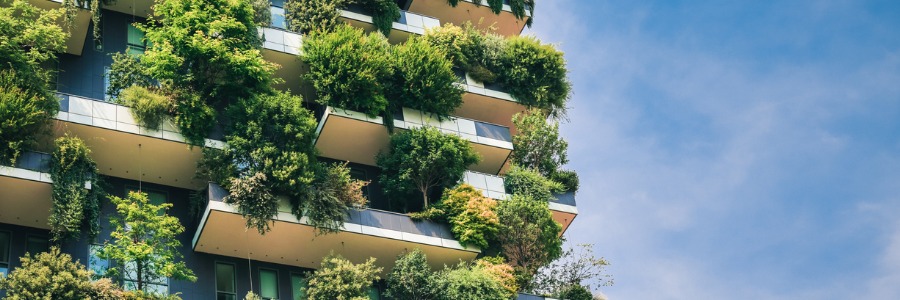
When a building or community has been designed, constructed and operates using strategies that preserve precious natural resources, reduces negative impacts on our climate and environment, and improves our quality of life, it’s commonly called “Green.” Any building can become “Green” as long as certain features are implemented in construction and operation.
From design to construction to operation, some of the features that qualify a building or community as “Green” are:
- A building design that can adapt to the environment as it changes
- Use of building materials that are non-toxic, ethical and sustainable
- Use of renewable energy, such as solar energy
- Efficient use of water– such as harvesting rainwater for irrigation
- Pollution and waste reduction measures that enable re-use and recycling
- Good indoor environmental air quality
Back in the early 90’s, Paul Bassett Sr Vice President, Water Efficiency at ENVOCORE was an irrigation technician when the groundwork for building “Green” was being laid in Washington DC. Today, Washington DC is the Mecca of LEED Certified Green buildings.
“I was grateful at that point in my career to work on the first ever LEED for existing buildings,” says Paul, who now has over 30 years of experience in smart water management and irrigation design. “It really set the roots of my path and my career into water conservation. “Water is where I live and breathe,” adds Paul. “As water is becoming more expensive and a rarity, they’re starting to include a lot more water conservation measures into the performance contracting process.”
Water usage in buildings is a huge part of operating “Green.” Managing water usage saves money on utility bills. But you can’t manage what you don’t measure, and unseen water leaks and waste can cost up to hundreds of thousands of dollars a year. Utilizing WaterCompass can monitor and control water usage in real-time though, and quickly identify leaks. In fact, WaterCompass has earned Top Product of the Year Award in the elite Environment + Energy Leader Awards program.
When a building or community was designed and built using strategies that improve environmental performance over a building’s lifetime– that is, shows conservation in energy, water, CO2 emissions, indoor environmental quality and stewardship of resources—it is awarded the internationally recognized Leadership in Energy and Environmental Design (LEED) certification.
Ever since its inception in Washington DC in the early 90’s, LEED has become known as the standard for excellence in sustainability in the building industry. It is what motivates builders, engineers, interior designers and landscape architects, among others from coast to coast to step up their “Green” game.
Such as The Woodlawn, a mixed-use residential and commercial property in Portland, Oregon that collects rainwater from the roof in a 9,000 gallon concrete cistern. A BaseStation 3200 irrigation controller draws water from the cistern to irrigate not only the roof, but down the green walls. Soil moisture sensors monitor the roof and the entire length of the green walls, from top to bottom.
Harvesting rainwater to irrigate the entirety of its green roof and walls contributed to The Woodlawn being recognized with the highly coveted LEED Platinum certification. From top to bottom—that’s what you call going above and beyond “Green!”
Watch full Webinar, Water Use Efficiency in Energy Service Performance Contracting featuring Paul Bassett below!

